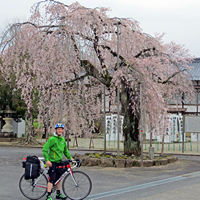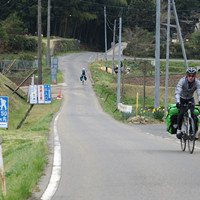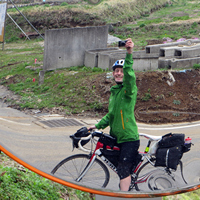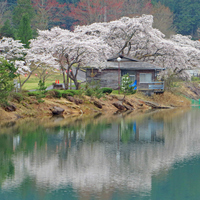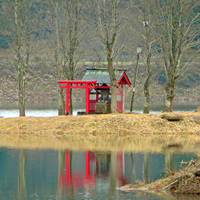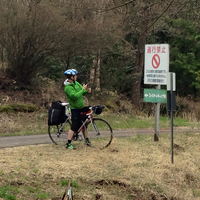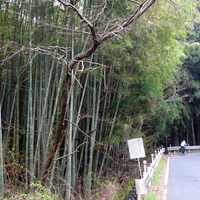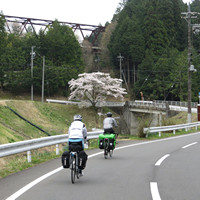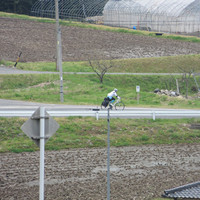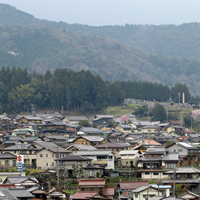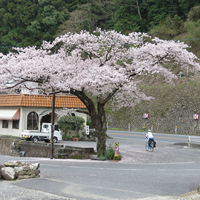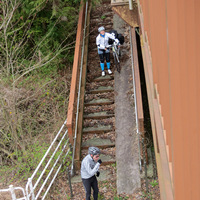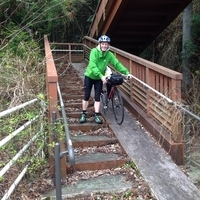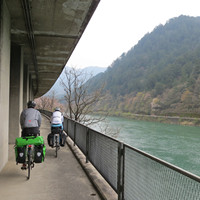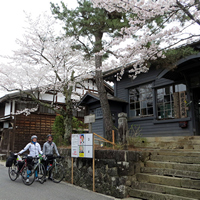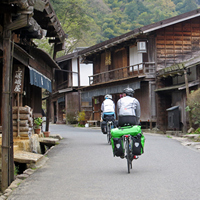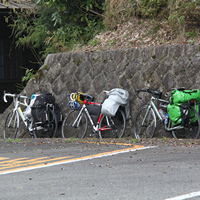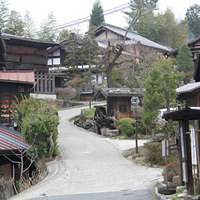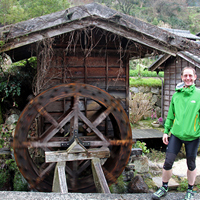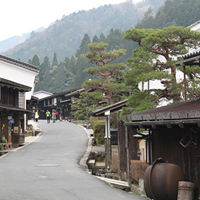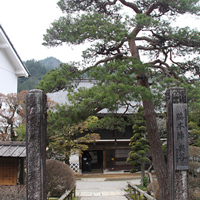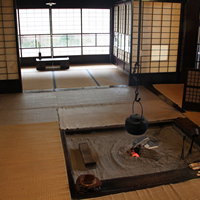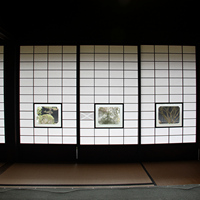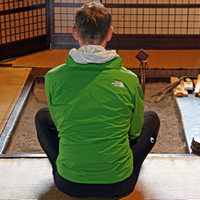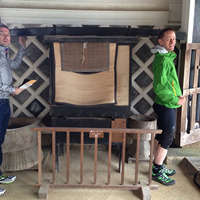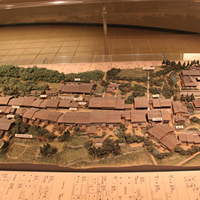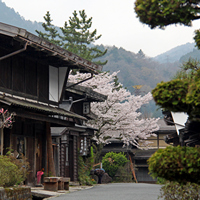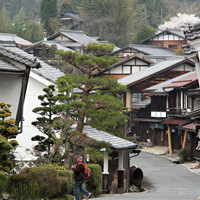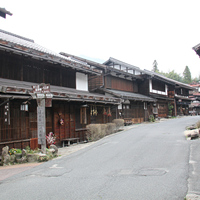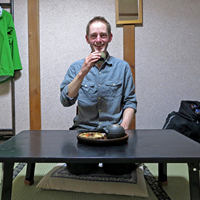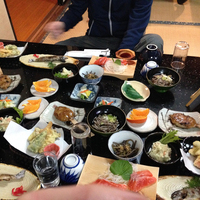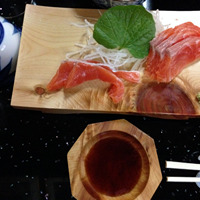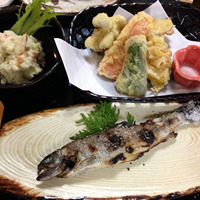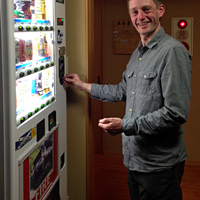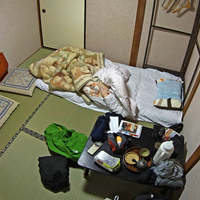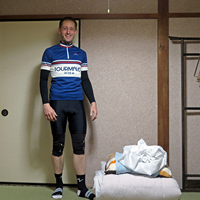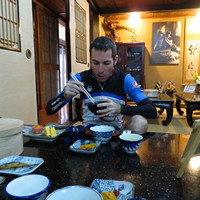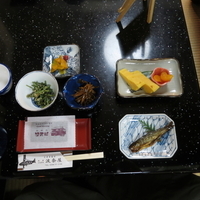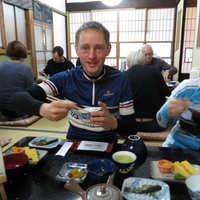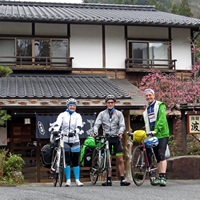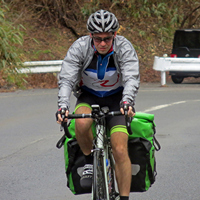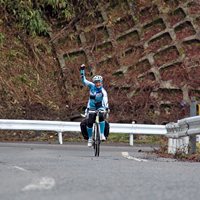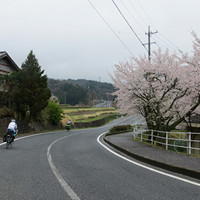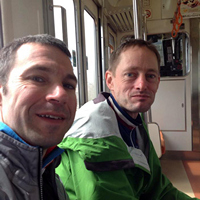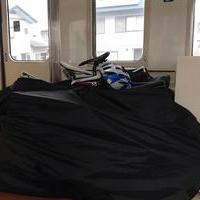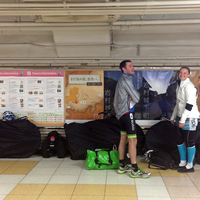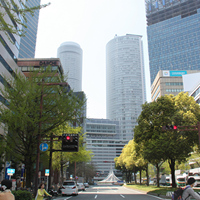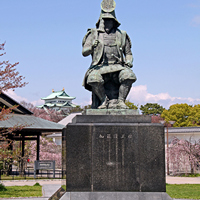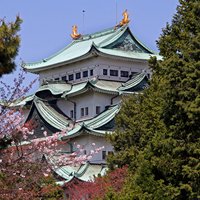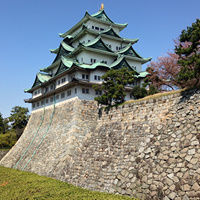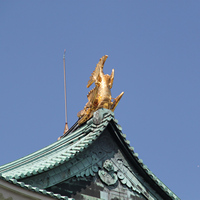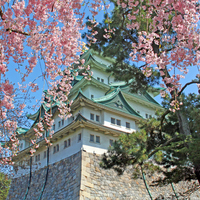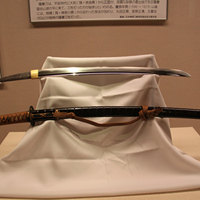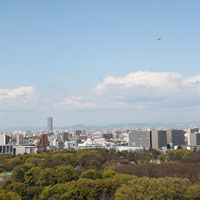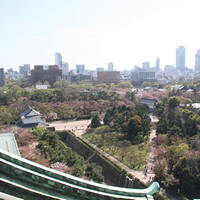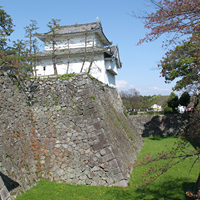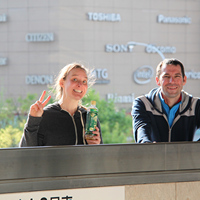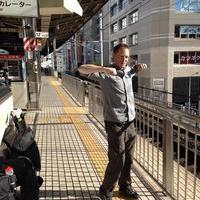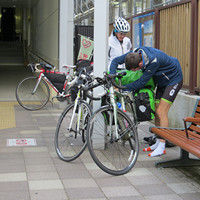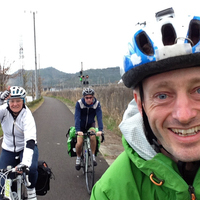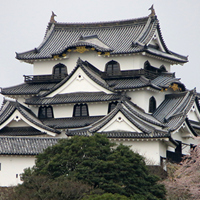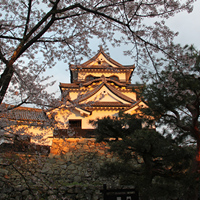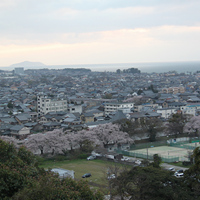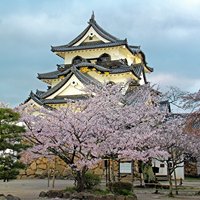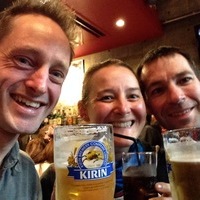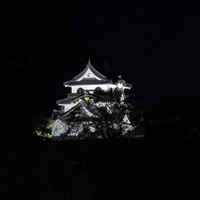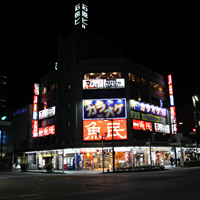Thirty or so kilometres out of Gero, we turned left on to quieter back roads with quaint villages and a scenic lake. We then descended into the aptly named Sakashita it was very nice really but this is it's western name! before joining the busier route 19.
At around 3pm we arrived into Tsumago-juku, a faithfully restored Edo era post town and modern day tourist attraction. Tsumago was the 42nd of 69 rest stations along the historic 'Nakasendo' trade route, which ran from Nihonbashi in Edo (Tokyo to Sanjo Ohashi in Kyoto.
At around 3pm we arrived into Tsumago-juku, a faithfully restored Edo era post town and modern day tourist attraction. Tsumago was the 42nd of 69 rest stations along the historic 'Nakasendo' trade route, which ran from Nihonbashi in Edo (Tokyo to Sanjo Ohashi in Kyoto.
Tsumago now comprises a number of craft shops, museums and guest houses and is worth a few hours of anyone's time. We cycled through first before parking up and finding a cafe for some much needed kōhī, then took a tour of a historic house and museum. Just as we were leaving the heavens opened and the rain came down. We cycled the last few kilometres in drizzle but soon arrived at the accommodation highlight of our trip - a night in a Ryokan.
Ryokan are Japanese inns that originated in the Edo period. They typically feature private tatami-matted rooms with futons, sliding doors, shared bathrooms and in our case, a communal dining room where kaiseki-ryōri, a traditional multi-course dinner is served. Our Kaiseki included soup, tofu, tempura and the most wonderful salted fish!
After a fantastic breakfast at our Ryokan, we set off up a long, steep climb before enjoying the extended descent the other side that eventually met back up with route 19, which we'd been on the previous day.
This road was carrying much more traffic than I had anticipated when planning the route back in UK though. It can be tricky to identify suitable roads when planning a route many thousands of miles away and I'd got this one a bit wrong! After consulting various maps we agreed we weren't far from a town called Nakatsugawa, which looked like it was on a train line to Nagoya. So we re-planned the day and hopped on the next available train.
This road was carrying much more traffic than I had anticipated when planning the route back in UK though. It can be tricky to identify suitable roads when planning a route many thousands of miles away and I'd got this one a bit wrong! After consulting various maps we agreed we weren't far from a town called Nakatsugawa, which looked like it was on a train line to Nagoya. So we re-planned the day and hopped on the next available train.
The time saved taking the train enabled us to visit Nagoya castle which, in hindsight, should always have been on the itinerary.
Leaving our bikes locked at the station, we walked the couple of miles to the castle. The original building was built as the seat of the ruling Tokugawa family at the start of the Edo Period and was one of the largest castles in Japan. Destroyed by fire during a 1945 bombing raid, the current ferro-concrete version is a reconstruction from 1959. It contains a good museum with exhibits from the castle's history.
Leaving our bikes locked at the station, we walked the couple of miles to the castle. The original building was built as the seat of the ruling Tokugawa family at the start of the Edo Period and was one of the largest castles in Japan. Destroyed by fire during a 1945 bombing raid, the current ferro-concrete version is a reconstruction from 1959. It contains a good museum with exhibits from the castle's history.
We made it back to the station in time for our Shinkansen connection, a short hop to Hikone, where we had another few kilometres to pedal to our hotel. It was getting late but before we got to our hotel we stopped to check out the amazing Hikone Castle.
In contrast to the modern day rebuild of Nagoya, Hikone is one of the oldest original-construction castles in Japan. Completed in 1622, it's one of only 4 castles considered a Japanese national treasure.
In contrast to the modern day rebuild of Nagoya, Hikone is one of the oldest original-construction castles in Japan. Completed in 1622, it's one of only 4 castles considered a Japanese national treasure.
Stu & Tamsyn were booked to return to the UK after Kyoto, so our fifth day cycling was our last together.
It started with some awesome cycling from our hotel along the east side of lake Biwa. This is flat, open country with green rice fields all around - as different from the snow-capped mountains from which we'd come as it's possible to get.
It started with some awesome cycling from our hotel along the east side of lake Biwa. This is flat, open country with green rice fields all around - as different from the snow-capped mountains from which we'd come as it's possible to get.
Leaving the Alps behind meant a change in temperature too, with the mercury hitting 25 in the mid-day sun. Off came the jackets and leggings of previous days and on with the sunscreen. Or at least it should have been. Neither Stu nor I were quick enough on the uptake and both paid the price with burnt noses by the end of the day!
